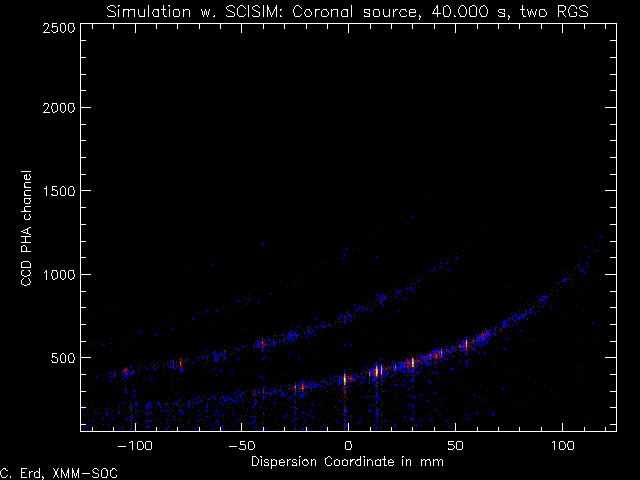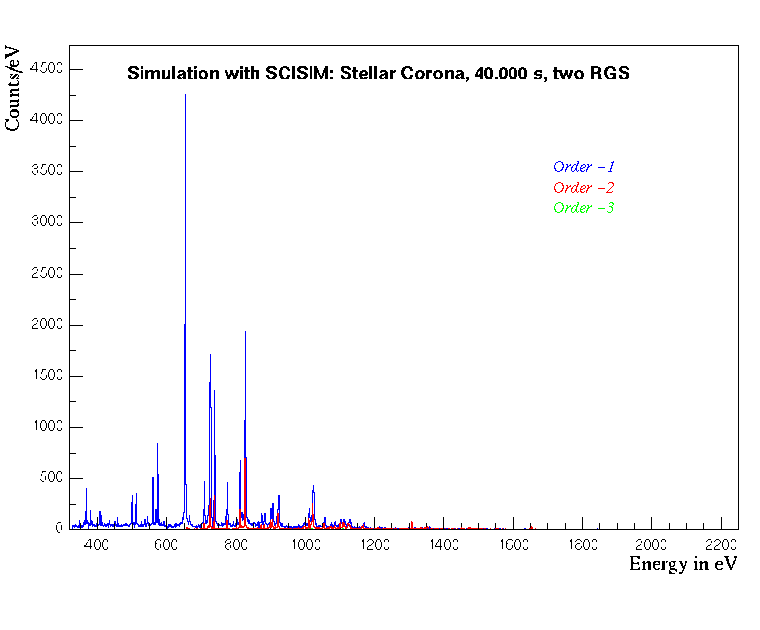XMM-Newton Simulation of Emission from a Stellar Corona
As an example for an observation of a stellar corona, a simulation of the response of RGS was performed. The input spectrum was a two component Mewe-Kaastra plasma, with solar abundance, and temperatures of 0.35 and 2 keV. The intensity was 2.1 × 10¯² photons/cm²/s over a band from 100 eV to 15 keV. (This is similar to the characteristics of Capella).Two RGS were simulated for a 40 ks exposure, and the output data were combined. The following image shows an intensity display of the measured spectrum with dispersion coordinate as measured in the spatial dimension on the RGS Focal Camera (RFC) along the abscissa, and the energy response of the CCDs along the ordinate. The intensity is plotted on a logarithmic scale.

As can be seen, the different orders of the RGA can be separated well by using the energy response of the CCDs. The following two graphs show the measured spectrum per order, on a linear and on a logarithmic scale, respectively.
The narrow dips in the spectrum are due to the boundaries of the CCDs. In the actual implementation, the two RFC cameras will be offset against each other, in order to avoid loss of information due to the gaps between the CCDs of the RFC. This was not included in this simulation.

(click on the image to view spectrum in wavelength)

(click on the image to view spectrum in wavelength)
Return to Science with XMM-Newton page
[last update: 18 May 1998 by C. Erd]



